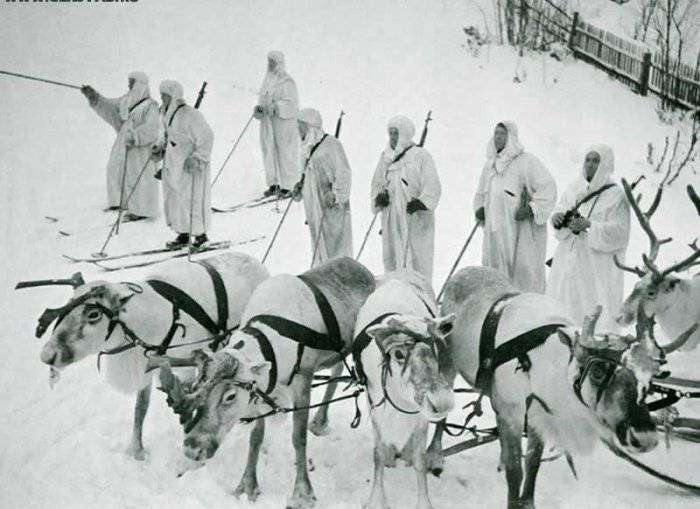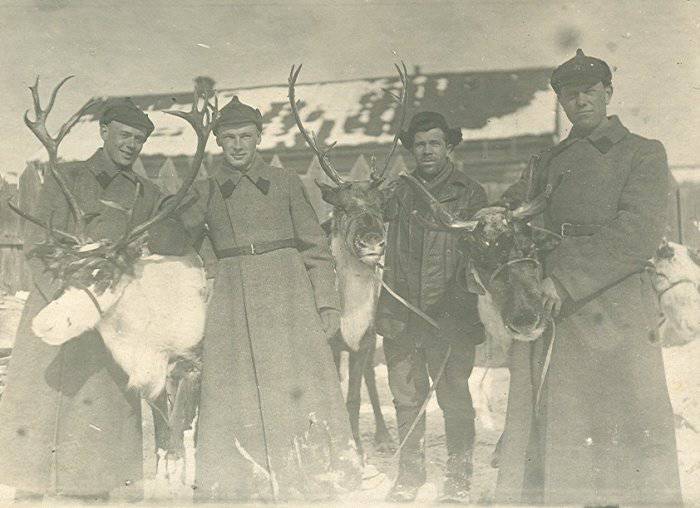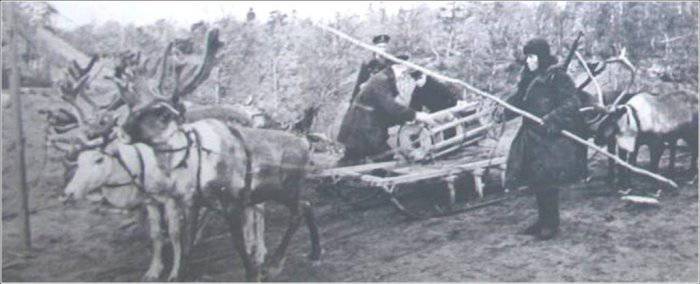Horned fighters of the Northern Front
Who just did not "call" for a war of animals! .. Horses, elephants, camels and even bulls in their time became combat units of armies. About such units stories known quite well. But, as it turns out, these representatives of the fauna do not exhaust the participation of animals as military men. So, at least two attempts to attract ... deer to the fighting are known.
The first such attempt was made at the beginning of the 17th century. Special elk troops were created in the Swedish army, but they were soon disbanded. The moose turned out to be quite reasonable animals and, in the event of a danger, immediately fled from the battlefield.
Later, already in the Soviet Union, during the Great Patriotic War, an attempt was made to create transport units of deer, which were to be used in combat conditions. Yegor Ledkov, who then worked as a deer herder at the Indigo State Farm, recalls those events: “At first we could not understand why we were ordered to overtake so many deer in Arkhangelsk. Then we learned that it is necessary to create military units. We did not understand: which of the deer may be military units? We, the drovers - Nenets, Komi and Russian - were attached to the battalion. During the month we were trained - preparing for work in combat. At first nothing worked. A reindeer team is riding, and suddenly the machine guns opened fire. Deer or immediately shy away, or even become, as if rooted to the ground. Mines whistled above us, volleys of guns were heard nearby ... they were disguised as follows: they dug trenches in the snow so deep that the team could fully enter, and people with it in camouflage gowns. And then we were given a command to load the trains. We ask the chiefs: “Where are they taking us?” - “To fight! - They say. - Fritsev beat. In Murmansk from Arkhangelsk, we carried over a thousand bull reindeer. Every deer was already trained, not afraid of shots. ”
Alexey Ledkov, who was mobilized from Nadym, was also part of the deer-skiing battalion. Here is how he recalls that time: “While the reindeer and I traveled to Murmansk, the animals became very sick, swayed as much. The commanders invented dressing bags stuffed with hay, deer on the neck - eat, they say, I do not want! And they, relatives, do not eat hay! So they starved. While they arrived at the scene, a quarter of the animals had already died ... "
The positions of the reindeer herders were mainly staffed from representatives of the local population: the Saami, the Nenets and the Komi, who were well versed in caring for deer, knew how to look for their moss, were very well oriented in the tundra. All reindeer vehicles were supplied with pack saddles, special equipment. The total number of deer in the 14 Army alone reached almost 5 thousands of heads during the war years, a little less deer were in the 19 Army of the Northern Front.
Reindeer quite often used not only for the delivery of military goods and sending the wounded, but also during the throwing of scouts to the rear of the enemy, for the removal of wrecked aircraft and their crews and to maintain communication with border guards.
In general, during the fighting in the Polar region, from 1941 to 1944, more than 17 thousand tons of ammunition and other cargoes were delivered to the battle sites by means of reindeer transport; transported about 8 thousands of soldiers and officers; transported from the battlefield more than 10 thousands of wounded and sick.
Filipp Filippov, the shooter of the First Reindeer Transport Battalion, recalls how the Germans first perceived the reindeer carts: “Having decided that the peasants and reindeer-breeders were going there and there, they simply ignored them. And only later figured out the essence of these shuttle trips. After that, it became dangerous to cruise even in the dark. ”
Interesting was the landing at Cape Pikshuev in April 1942. At first, it was worth a lot of effort to load the deer on warships, and then no less - to land them. Alexander Denisov, the fighter "Olenetransportnik", recalls that operation: "The reindeer were tied with ropes and lowered into the boats. Then they just started dropping overboard. Animals swam for people who sat in the boats. As for the sleds, they were tied in a chain and dragged to the shore. Already 75 sleds were lowered into the water and extended to the land as follows. The deer immediately rushed to the sled ... "



Information